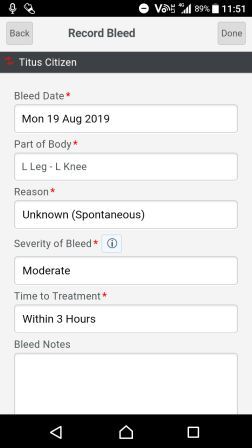SUMIT PARIKH
Dr Sumit Parikh is the AHCDO ABDR Senior Research Fellow
In 2018, extended half-life (EHL) recombinant factor VIII and factor IX products became available in Australia to a limited number of haemophilia A and haemophilia B patients with high priority needs. The National Blood Authority (NBA) implemented this limited interim supply arrangements under the coordination and monitoring of the Australian Haemophilia Centre Directors’ Organisation (AHCDO).
Currently AHCDO is undertaking a project to develop a better understanding of current clinical practices regarding the use of EHLs in haemophilia treatment centres (HTCs) across Australia. The project will also evaluate ABDR and MyABDR use, compliance with the product and examine various aspects of haemophilia care in Australia. Patients with at least 3 months of exposure to EHLs were included in the study to be able to determine the effectiveness of EHLs and the ‘real-life’ practice of physicians prescribing EHL products.

A total of 203 patients (139 with haemophilia A and 64 with haemophilia B) have commenced on EHL factor products for regular prophylaxis. There are 193 patients (131 with haemophilia A and 62 with haemophilia B) with 3 or more months of exposure to EHLs.
Whilst the data is still being reviewed, it was clearly evident that the interim program requirement for prompt data recording saw a significant increase in MyABDR uptake that coincided with commencing treatment with EHLs. Accuracy of outcome data recording has greatly improved, mainly related to specifics of the bleed, such as the Bleed Date, Dose and Body Location. Initial results also indicate better compliance to the prescribed regimen leading to reduced bleeds while on EHL products. However, identifying variables for the cause of bleed in some patients and categorising bleeds by their severity still needs further investigation. It was very reassuring to confirm that none of the patients tested developed a clinically significant inhibitor after switching to an EHL product.
As the project progresses further it will be a pleasure to update the community on the outcomes of the study.
Haemophilia Foundation Australia acknowledges the Traditional Owners and Custodians of Country throughout Australia, the land, waters and community where we walk, live, meet and work. We pay our respects to Elders past and present and extend that respect to all Aboriginal and Torres Strait Islander peoples.
Sign up for the latest news, events and our free National Haemophilia magazine